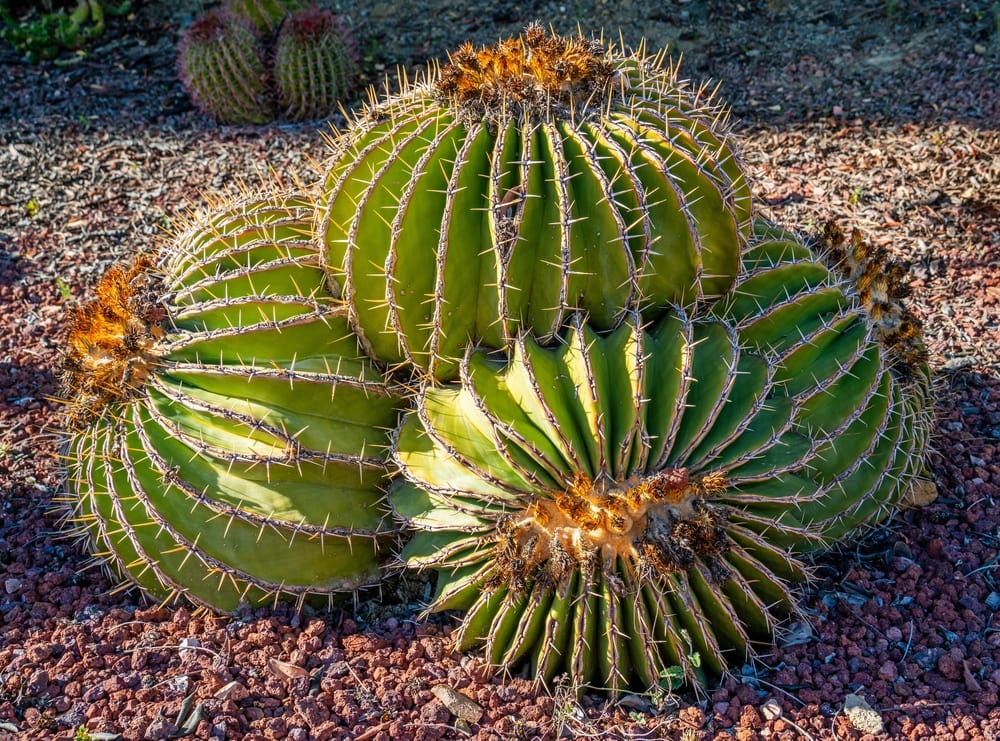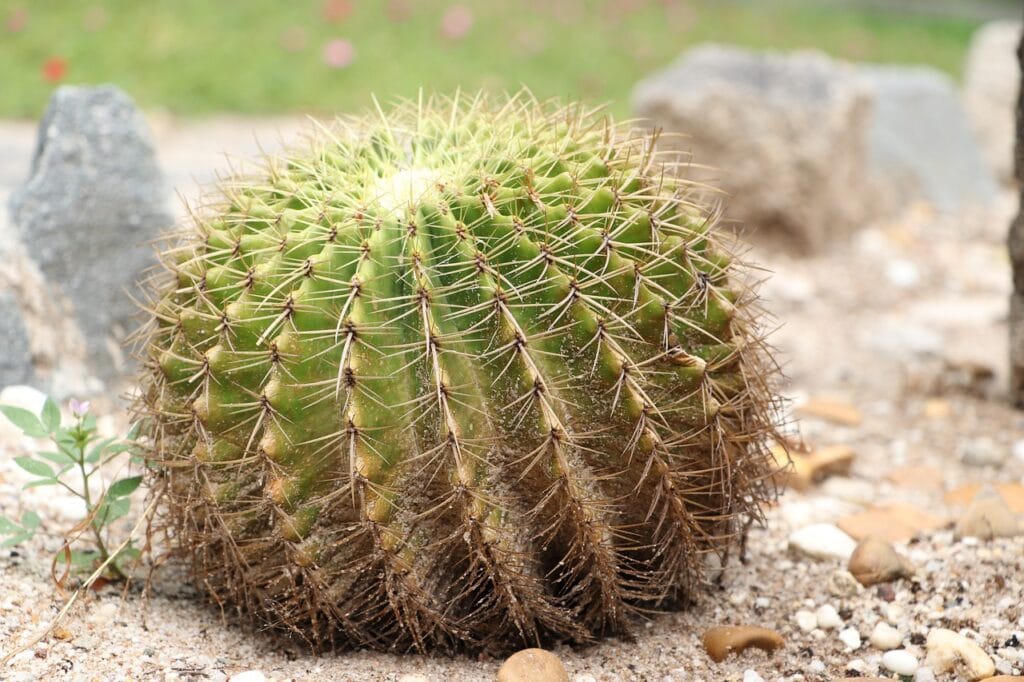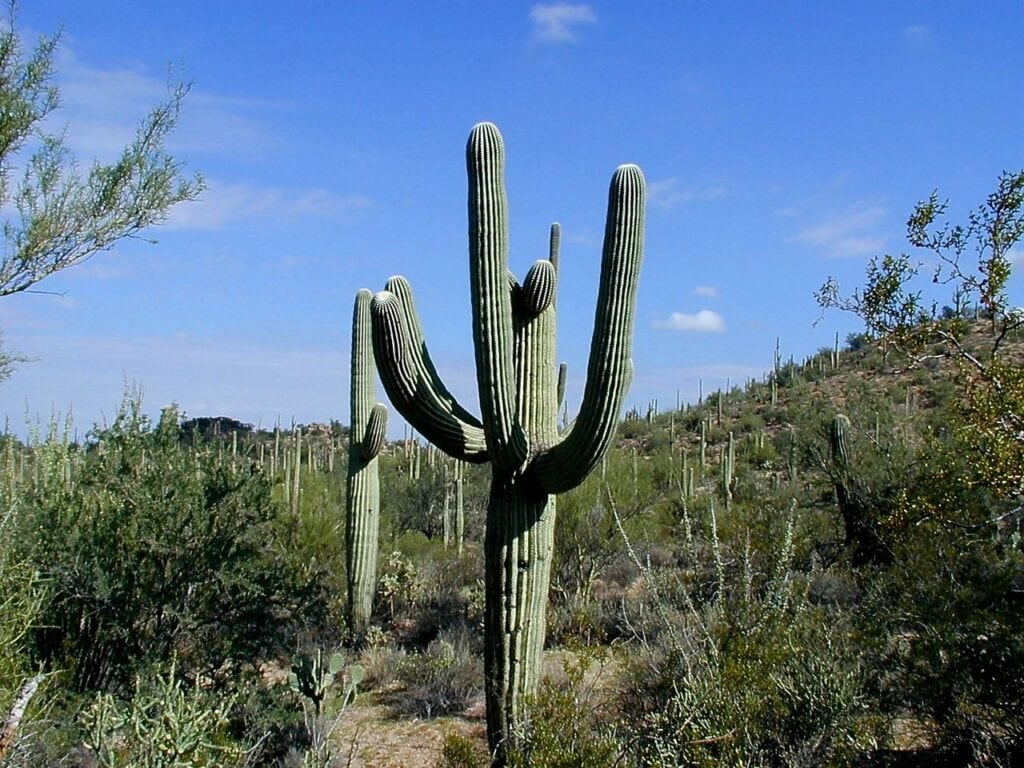17 Impressive Types of Cacti in Mexico (With Pictures)
-
Kristin Hitchcock
- Last updated:

As you’d imagine, there are many different cacti in Mexico. The country’s unique landscape and climate provide homes for some of the world’s most beautiful flora and fauna. In fact, there are over 200 species, as well as several subspecies. This number only counts the native cacti in Mexico, not those introduced. Therefore, visiting Mexico can quickly introduce you to countless cacti species.
Below, we’ve listed some of the larger species in Mexico and provided basic information about each one.
The 17 Impressive Types of Cacti in Mexico
1. Acharagma
The Acharagma is a genus of cacti that contains two species. These cacti are small and grow in tiny clusters, usually by themselves. They have lots of spines and tiny flowers that grow from the top of the cacti. Often, the flowers range from cream to pink. Sometimes, yellow flowers are found, too.
2. Ariocarpus

This genus contains many species, but they are very similar to each other. This cacti’s fruits resemble acorns, which is why it is named “acorn fruit” in Latin. It is found across an extensive range of Northern Mexico and into Texas.
However, in the wild, this plant is endangered and quite rare. They are very slow-growing, which partially explains why they are challenging to find.
3. Aztekium
This genus contains three species of small, round cacti. The Aztekium was first discovered in 1929, primarily because it is small and easy to miss. Usually, the plants have 9 to 11 ribs and range from pale green to grey-green. The flowers produced are white and pink and extremely small.
4. Barrel Cactus

The Barrel Cactus is two species of cacti. The cacti can get quite large, which is why they are more widely known than other plants. They can reach up to 3 feet tall when fully grown, though they have been known to reach up to 10 feet in some regions.
Barrel cacti are incredibly hardy and can sometimes live up to 100 years. The plants only flower once they are significantly mature and a few years of age. Usually, they bloom in April with bright yellow and orange flowers. However, red varieties are also available.
5. Bergerocactus
The Bergerocactus is also known as the golden snake cactus and golden-spined cactus. It is a tiny cactus that forms a dense bunch of thickets. The dense yellow spines give the cactus its name. In the early spring, yellow and green flowers emerge. The flowers then turn into reddish, round fruit.
6. Saguaro

The Saguaro cactus is the stereotypical, tall cactus. It is often described as “tree-like” and can grow up to 40 feet tall. It is native to the southern USA and parts of Mexico. The saguaro flower is the state flower of Arizona. Like most cacti, this one has a relatively long lifespan of 150 years.
However, they grow very slowly. Usually, they don’t grow their first arm until they are over 75 years old! The plant absorbs rainwater and visibly expands as it does so. The extra arms help it absorb more water, which allows it to live through more extended droughts.
7. Cephalocereus
The Cephalocereus cactus is very slow-growing and looks more hairy than spiny. Usually, the cacti grow into a column and appear blue-green. While over 114 species of this cactus, only five have been accepted as “real” species. Usually, the cacti are branched. However, they can also grow unbranched.
8. Coryphantha
The Coryphanthagenus is very large, with over 57 species and 20 subspecies. They are native to parts of Mexico and the southern USA. Some species can even be found in Montana. These cacti do not have ribs. Instead, they have tubercles.
The flowers grow on top of the plants and come in various colors.
9. Cylindorpuntia
The Cylindorpuntia is tree-like and has many barbed spines. The spines attach to the skin very easily and don’t come off without removal. This plant also spreads in a strange manner. Many plants in the same area often have the same DNA. Therefore, they were likely originally all the same plant but spread through propagation.
10. Echinocactus
The Echinocactus subfamily of cacti means simply “spiny” in Latin. It has relatively small flowers and creates significantly woolly fruits. They are one of the few cacti that seem to spread largely through seeds, not propagation. They are relatively easy to grow and are widely grown for aesthetic purposes in Mexico.
11. Fishhook Cactus
The Fishhook cactus only grows to about 7 inches and is similar to the barrel cactus. However, they are smaller and have different features. Despite often being referred to as a singular type of cactus, this category contains 150 species.
This cactus can be found easily on the US-Mexico border and in the Mesa Verde National Park. Often, it is found growing in rocky locations.
12. Geohintonia
The Geohintonia was discovered by George S. Hinton, hence the name. This cactus is found mainly in Mexico. It is a solitary plant that slowly grows into a column. However, it takes a very long time for a significant amount of growth to occur. The plant has extremely prominent ribs.
13. Grusonia
The Grusonia can be found in the southwestern United States and northern Mexico. It’s common in Baja California. The boundary of this species is somewhat debated, so it largely depends on who you ask.
14. Mammilloydia
The Mammilloydia is often referred to as the “snowball cactus.” It is green and globe-shaped. However, the spines are white and very numerous. Therefore, the plant appears to be white and not green.
It is also covered in fine white hairs, which add to this appearance. Some of the spines are closer to brown than white, however.
15. Myrtillocactus
With a name that translates to “blueberry cactus,” you would imagine that the Myrtillocactus would be blue. However, that is not the case. This cactus looks quite ordinary. It is green and grows into a small column.
In the summer, they produce edible purple berries, which is likely where they got their name.
16. Obregonia
The Obregonia is only found in the state of Tamaulipas in Mexico. The species was named after the minister of agriculture at the time of the species’ discovery. It is a rare species with an inverted pine cone in the center. It is also incredibly woolly.
17. Opuntia
Also known as the prickly pear cactus, the Opuntia is very common and regularly grown for aesthetic reasons. It is entirely edible and one of the few cacti commonly used in cooking. Therefore, it is often grown by people and found in the wild.
- You might also like: What is Arizona’s State Flower and How Was It Decided?
Conclusion
There are many species of cacti found in Mexico. Most of them thrive in the northern part of the country. They come in all shapes and sizes and nearly 200 varieties. Most of the species belong to a few specific genera, however.
By understanding the genera of cacti commonly found, you can identify most species—more or less. Although many species native to Mexico can be grown in the United States, ensure the conditions are ideal in your location before purchasing cacti.
- Related read: 30 Types of Cacti in New Mexico (With Pictures)
Featured Image Credit: Gert-Jan van Vliet, Shutterstock
Contents
